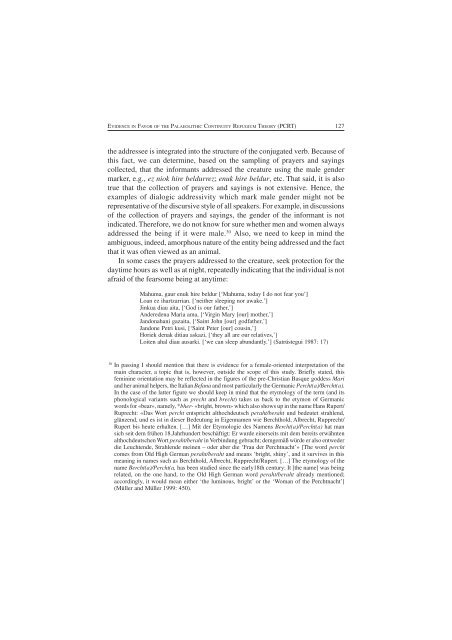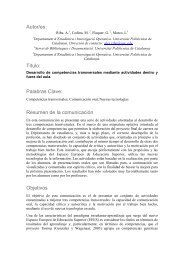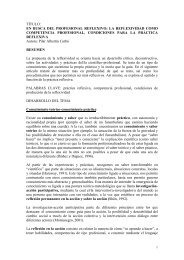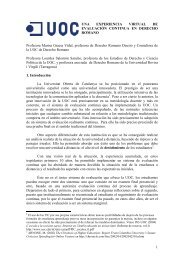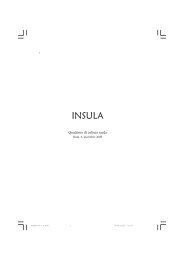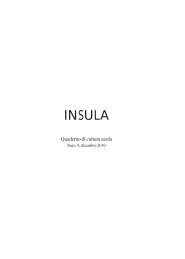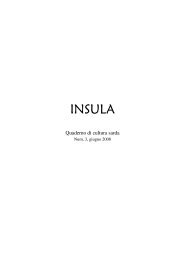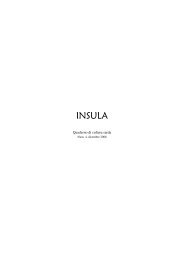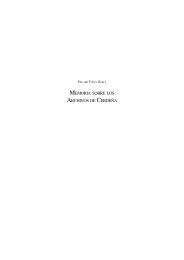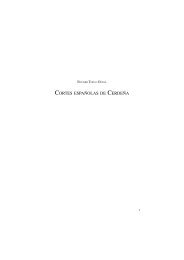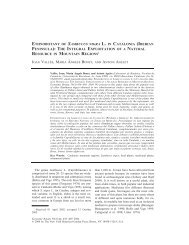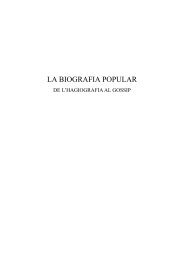Impaginato 5.p65 - Universitat Rovira i Virgili
Impaginato 5.p65 - Universitat Rovira i Virgili
Impaginato 5.p65 - Universitat Rovira i Virgili
You also want an ePaper? Increase the reach of your titles
YUMPU automatically turns print PDFs into web optimized ePapers that Google loves.
EVIDENCE IN FAVOR OF THE PALAEOLITHIC CONTINUITY REFUGIUM THEORY (PCRT)<br />
127<br />
the addressee is integrated into the structure of the conjugated verb. Because of<br />
this fact, we can determine, based on the sampling of prayers and sayings<br />
collected, that the informants addressed the creature using the male gender<br />
marker, e.g., ez niok hire beldurrez; enuk hire beldur, etc. That said, it is also<br />
true that the collection of prayers and sayings is not extensive. Hence, the<br />
examples of dialogic addressivity which mark male gender might not be<br />
representative of the discursive style of all speakers. For example, in discussions<br />
of the collection of prayers and sayings, the gender of the informant is not<br />
indicated. Therefore, we do not know for sure whether men and women always<br />
addressed the being if it were male. 30 Also, we need to keep in mind the<br />
ambiguous, indeed, amorphous nature of the entity being addressed and the fact<br />
that it was often viewed as an animal.<br />
In some cases the prayers addressed to the creature, seek protection for the<br />
daytime hours as well as at night, repeatedly indicating that the individual is not<br />
afraid of the fearsome being at anytime:<br />
Mahuma, gaur enuk hire beldur [‘Mahuma, today I do not fear you’]<br />
Loan ez ihartzarrian. [‘neither sleeping nor awake.’]<br />
Jinkua diau aita, [‘God is our father,’]<br />
Anderedena Maria ama, [‘Virgin Mary [our] mother,’]<br />
Jandonahani gazaita, [‘Saint John [our] godfather,’]<br />
Jandone Petri kusi, [‘Saint Peter [our] cousin,’]<br />
Horiek denak ditiau askazi, [‘they all are our relatives,’]<br />
Loiten ahal diau ausarki. [‘we can sleep abundantly.’] (Satrústegui 1987: 17)<br />
30 In passing I should mention that there is evidence for a female-oriented interpretation of the<br />
main character, a topic that is, however, outside the scope of this study. Briefly stated, this<br />
feminine orientation may be reflected in the figures of the pre-Christian Basque goddess Mari<br />
and her animal helpers, the Italian Befana and most particularly the Germanic Percht(a)/Bercht(a).<br />
In the case of the latter figure we should keep in mind that the etymology of the term (and its<br />
phonological variants such as precht and brecht) takes us back to the etymon of Germanic<br />
words for «bear», namely, *bher- «bright, brown» which also shows up in the name Hans Rupert/<br />
Ruprecht: «Das Wort percht entspricht althochdeutsch peraht/beraht und bedeutet strahlend,<br />
glänzend, und es ist in dieser Bedeutung in Eigennamen wie Berchthold, Albrecht, Rupprecht/<br />
Rupert bis heute erhalten. […] Mit der Etymologie des Namens Bercht(a)/Percht(a) hat man<br />
sich seit dem frühen 18.Jahrhundert beschäftigt: Er wurde einerseits mit dem bereits erwähnten<br />
althochdeutschen Wort peraht/beraht in Verbindung gebracht; demgemäß würde er also entweder<br />
die Leuchtende, Strahlende meinen – oder aber die ‘Frau der Perchtnacht’» [The word percht<br />
comes from Old High German peraht/beraht and means ‘bright, shiny’, and it survives in this<br />
meaning in names such as Berchthold, Albrecht, Rupprecht/Rupert. […] The etymology of the<br />
name Bercht(a)/Percht(a, has been studied since the early18th century: It [the name] was being<br />
related, on the one hand, to the Old High German word peraht/beraht already mentioned;<br />
accordingly, it would mean either ‘the luminous, bright’ or the ‘Woman of the Perchtnacht’]<br />
(Müller and Müller 1999: 450).


